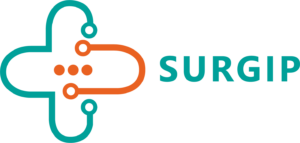Operational efficiency software is revolutionizing the way healthcare facilities orchestrate their daily operations, paving the path towards streamlined processes, improved resource allocation, and ultimately, enhanced patient care delivery. Picture this: a bustling hospital where surgical schedules seamlessly align, staff assignments optimize, and communication flows effortlessly. In this blog post, we delve into the transformative power of operational efficiency software and how it is reshaping the landscape of healthcare operations. Join us on a journey to discover the key features, benefits, and best practices of leveraging cutting-edge software solutions in healthcare settings for unparalleled efficiency and success.
Understanding Operational Efficiency in Healthcare
In the fast-paced and critical environment of healthcare facilities, operational efficiency plays a pivotal role in ensuring smooth workflows, optimal resource utilization, and high-quality patient care. Specifically, operational efficiency refers to the capability of healthcare organizations to deliver services in the most cost-effective manner while maintaining quality standards.
Challenges Faced in Achieving Operational Efficiency
Even though operational efficiency is crucial, healthcare facilities encounter various challenges in its implementation:
-
Complexity of Operations: Healthcare settings involve multiple departments, varied personnel, and intricate processes, making coordination a challenge.
-
Limited Resource Allocation: Balancing scarce resources such as staff, equipment, and time while meeting patient demands can be difficult.
-
Regulatory Compliance: Strict regulations and compliance requirements add layers of complexity to operational processes, requiring meticulous management.
Benefits of Utilizing Cutting-Edge Operational Efficiency Software
Operational efficiency software offers a range of benefits that can transform healthcare operations:
-
Streamlined Scheduling: Software automates the scheduling process, optimizing staff assignments, room allocations, and procedure timelines.
-
Enhanced Communication: Facilitates real-time communication among healthcare teams, reducing errors and delays in information sharing.
-
Data-Driven Decision-Making: Provides insights through data analytics, enabling informed decisions for operational improvements.
Key Features to Look for in Operational Efficiency Software
When selecting operational efficiency software for healthcare facilities, consider features such as:
-
Automation Capabilities: Ability to automate scheduling, task assignments, and notifications for seamless operations.
-
Real-Time Tracking: Monitoring resources, staff, and patient status in real-time for immediate adjustments.
-
Integration Options: Compatibility with existing healthcare systems for data exchange and workflow continuity.
By leveraging cutting-edge operational efficiency software, healthcare facilities can overcome challenges, enhance productivity, and deliver superior patient care.
Case Studies: Successful Implementation of Operational Efficiency Software
In recent years, many healthcare facilities have adopted operational efficiency software with remarkable results, showcasing the positive impact of technological advancements in optimizing healthcare operations. Here are some compelling case studies:
Case Study 1: Hospital X Transforms Scheduling Process
-
Hospital X was facing challenges in coordinating surgical schedules, leading to increased wait times and inefficient resource utilization.
-
By implementing cutting-edge operational efficiency software, the hospital automated scheduling, ensuring optimal utilization of operating rooms and staff.
-
The software enabled real-time updates, facilitating seamless communication among surgical teams and support staff, resulting in a 30% reduction in scheduling errors.
Case Study 2: Clinic Y Enhances Patient Flow
-
Clinic Y, a busy outpatient clinic, struggled with patient flow management and appointment scheduling, impacting overall efficiency.
-
Upon integrating operational efficiency software, the clinic streamlined appointment booking, reducing patient wait times and improving staff productivity.
-
The software's reporting capabilities provided valuable insights into clinic operations, leading to a 20% increase in patient capacity without compromising quality of care.
Case Study 3: Medical Center Z Boosts Cost Savings
-
Medical Center Z sought to reduce operational costs while maintaining high-quality patient care standards.
-
By adopting operational efficiency software, the medical center optimized resource allocation, minimized delays in patient care, and enhanced staff collaboration.
-
The software's analytics tools identified areas for improvement, ultimately saving the medical center 15% on operational expenses annually.
These case studies demonstrate the tangible benefits of operational efficiency software in healthcare settings, illustrating how technology can drive operational excellence and cost savings. By learning from successful implementations, healthcare facilities can harness the power of software solutions to enhance their operations and elevate patient care standards.
Implementing Operational Efficiency Software: Best Practices
Incorporating operational efficiency software into healthcare facilities requires careful planning and strategic implementation to maximize its benefits. Here are some best practices to consider when introducing and integrating such software:
Training Staff Effectively
-
Provide comprehensive training sessions for all staff members who will be using the software.
-
Ensure training covers various aspects, including navigation, data input, and reporting functionalities.
-
Offer ongoing support and resources for continuous learning and skill development.
Customizing Software to Fit Workflow
-
Tailor the software to align with the unique workflows and processes of the healthcare facility.
-
Customize settings, templates, and notifications to reflect the specific needs of different departments.
-
Continuously evaluate and adjust the software configuration to enhance operational efficiency.
Monitoring and Optimizing Software Usage
-
Regularly monitor key performance indicators and data generated by the software to track progress.
-
Analyze usage patterns, identify bottlenecks, and address any issues or inefficiencies promptly.
-
Engage with software providers for updates, feedback, and recommendations on optimization strategies.
Ensuring Data Security and Compliance
-
Implement robust data security measures to protect sensitive patient information and operational data.
-
Ensure compliance with healthcare industry regulations and standards concerning data privacy and security.
-
Conduct regular audits and assessments to maintain data integrity and regulatory adherence.
Encouraging Staff Engagement and Adoption
-
Foster a culture of transparency and open communication regarding the benefits of the software.
-
Encourage staff feedback, suggestions, and participation in ongoing software improvement initiatives.
-
Recognize and reward staff members who demonstrate proficiency in utilizing the software effectively.
By following these best practices, healthcare facilities can successfully implement and leverage operational efficiency software to streamline operations, enhance productivity, and ultimately deliver superior patient care.
Closing Thoughts on Operational Efficiency Software for Healthcare
In conclusion, the incorporation of operational efficiency software in healthcare facilities represents a significant step toward enhancing workflow optimization, resource management, and overall service quality. By leveraging cutting-edge software solutions tailored to the unique needs of healthcare settings, organizations can achieve substantial improvements in operational efficiency and cost savings. The successful implementation of such software not only streamlines processes but also fosters a culture of innovation, collaboration, and continuous improvement within healthcare teams.
As technology continues to advance and software solutions evolve, healthcare facilities must remain vigilant in embracing digital transformation to stay competitive and deliver exceptional patient care. Operational efficiency software serves as a valuable tool in navigating the intricate landscape of healthcare operations, enabling facilities to adapt to changing demands, improve patient outcomes, and drive sustainable growth.
Embracing operational efficiency software is not just about optimizing processes; it is about transforming the way healthcare organizations operate, innovate, and excel in an ever-evolving industry. By adopting best practices, fostering staff engagement, and staying committed to data security and compliance, healthcare facilities can harness the full potential of operational efficiency software to revolutionize their operations and shape the future of healthcare delivery.
For further insights and solutions tailored to enhancing operational efficiency in healthcare, explore how Company XYZ specializes in cutting-edge software solutions designed to streamline healthcare operations and elevate performance standards. Unlock the power of technology to drive operational excellence and achieve sustainable success in the dynamic realm of healthcare services.
Why Choose Surgip's Operational Efficiency Software?
At Surgip, we understand the intricate challenges healthcare facilities face in optimizing operational efficiency while maintaining high-quality patient care standards. Our operational efficiency software is meticulously designed to address these challenges and empower healthcare organizations to streamline their operations effectively. Here are compelling reasons why Surgip's software stands out:
Tailored Solutions for Healthcare Settings
-
Surgip's software is specifically tailored to meet the unique needs and workflows of healthcare environments.
-
Customizable features allow for seamless integration with existing processes and systems, ensuring a smooth transition and minimal disruptions.
Comprehensive Scheduling Capabilities
-
Our software offers advanced scheduling functionalities that automate and optimize the allocation of resources, staff assignments, and procedure timelines.
-
Real-time scheduling updates enhance communication and collaboration among healthcare teams, fostering efficiency and productivity.
Data-Driven Decision-Making
-
Surgip's software provides robust data analytics tools that offer valuable insights into operational performance, resource utilization, and workflow efficiency.
-
Data-driven decision-making empowers healthcare facilities to make informed adjustments and improvements for enhanced operational outcomes.
User-Friendly Interface and Support
-
The user-friendly interface of Surgip's software makes it easy for staff at all levels to navigate and utilize the system effectively.
-
Our dedicated customer support team provides ongoing assistance, training resources, and updates to ensure optimal software usage and performance.
By choosing Surgip's operational efficiency software, healthcare facilities can unlock a powerful tool that drives operational excellence, cost savings, and improved patient care outcomes. Experience the difference Surgip can make in revolutionizing your healthcare operations and elevating your facility's performance standards.
FAQ
How can operational efficiency software benefit healthcare facilities?
Operational efficiency software can benefit healthcare facilities by automating scheduling processes, optimizing resource allocation, improving communication among healthcare teams, enhancing decision-making through data analytics, and ultimately driving cost savings and patient care quality.
Is operational efficiency software customizable to fit the unique needs of healthcare settings?
Yes, operational efficiency software can be customized to align with the specific workflows, processes, and requirements of healthcare facilities. Customizable features allow for seamless integration with existing systems and the flexibility to adapt to varying operational demands.
What key features should healthcare facilities look for when choosing operational efficiency software?
When choosing operational efficiency software, healthcare facilities should look for features such as automation capabilities for scheduling and task assignments, real-time tracking and reporting functionalities, seamless integration with existing systems, user-friendly interfaces, and robust customer support.
How can staff training play a pivotal role in the successful implementation of operational efficiency software?
Effective staff training is crucial for the successful implementation of operational efficiency software. Comprehensive training sessions can improve staff proficiency in using the software, ensuring optimal utilization, minimizing errors, and maximizing the benefits of the technology.
What measures should healthcare facilities take to ensure data security and compliance when using operational efficiency software?
Healthcare facilities should implement strict data security measures to protect sensitive patient information and operational data. Regular audits, compliance checks, and adherence to industry regulations are essential to maintain data integrity and safeguard patient confidentiality.

